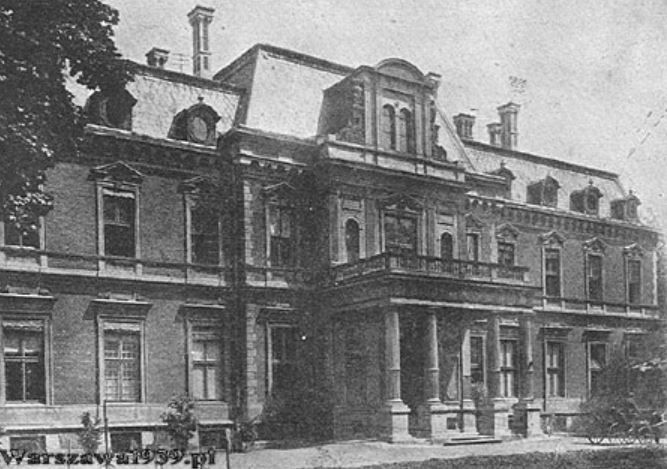Pierwsze dwa zdjęcia to pałac z dwóch perspektyw, kolejne to jego wypalone mury po wojnie (zdjęcie – Instytut Polski i Muzeum im. gen. Sikorskiego). Następne to Google Earth i zaznaczone na zielono kontur pałacu i to samo miejsce z dalszej perspektywy – widać Centrum Giełdowe, Plac Trzech Krzyż i Ethos, oraz Sheraton Plaza. Ostatnie to zdjęcie dzisiejsze zrobione z tego samego miejsca co pierwsze oraz jedyne co zostało z pałacu – słup…
Hello. This time I will start with a historical outline: when on September 3, 1939, France and England declared war on Germany, crowds of Warsaw residents went out to the street to cheer at the embassies of these countries located in two Branicki palaces. One of them – then the United Kingdom embassy still exists today (the one at 18 Nowy Świat / the corner of Smolna Street, on the right side of the palm tree), the other is the French embassy, where today there is only one fence post … The palace itself was erected in 1873 -1878 for Władysław Branicki in the former Frascati park, and the design in the style of the French Renaissance was prepared by Henryk Marconi’s son – Leandro, the palace was clad with red clinker bricks, which gave it the name of the „Red Palace”. After World War I, most of the Branicki estates remained in the territory of the Soviet Union, which significantly reduced their income, the family could not afford to maintain the palaces so they rented them to foreign diplomatic representations. The British settled in the palace on Nowy Świat, and in 1924 the Romanian ambassador moved into the „Red Palace”, and then 10 years later the palace was taken over by the French embassy, which added a southern wing to the palace the new one-story wings from the street side and slightly simplified the façade.
When the aforementioned crowd was singing „The Marseillaise” in the courtyard, French diplomats packed up to leave Poland torn by war. A few days after the ambassador left the residence, bombs fell on the building.
After the war, despite the rather well-preserved, though burnt, walls of the palace, the French refused to take it over again and the building was finally demolished.
The first two photos are the palace from two perspectives, the next are its walls burnt out after the war (photo – Polish Institute and the Sikorski Museum). The next ones are Google Earth and the outline of the palace marked in green and the same place from a further perspective – you can see the Stock Exchange Center, Trzech Krzyż Square and Ethos, and the Sheraton Plaza. The last is today’s photo taken from the same place as the first and the only thing left of the palace – a pole …

